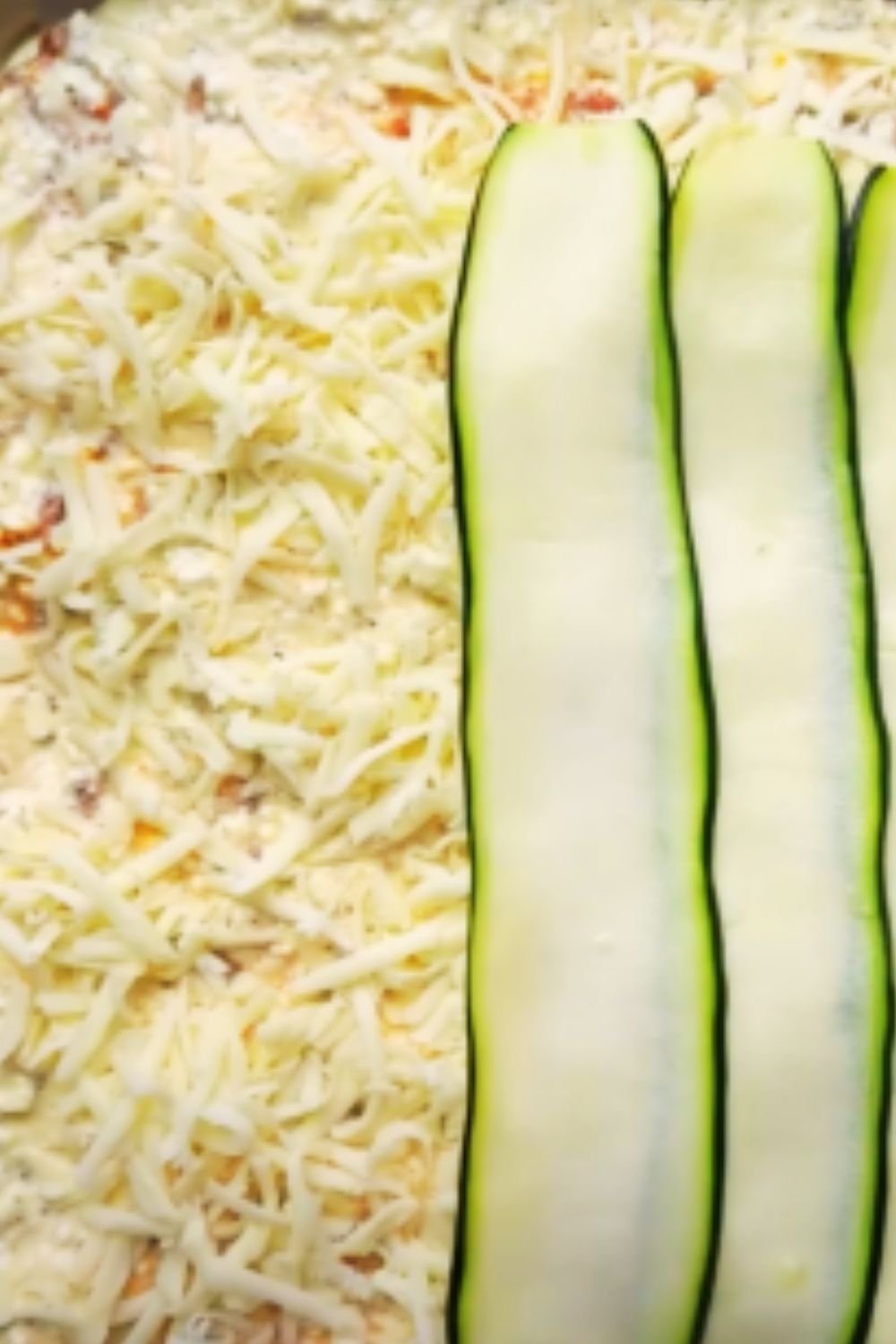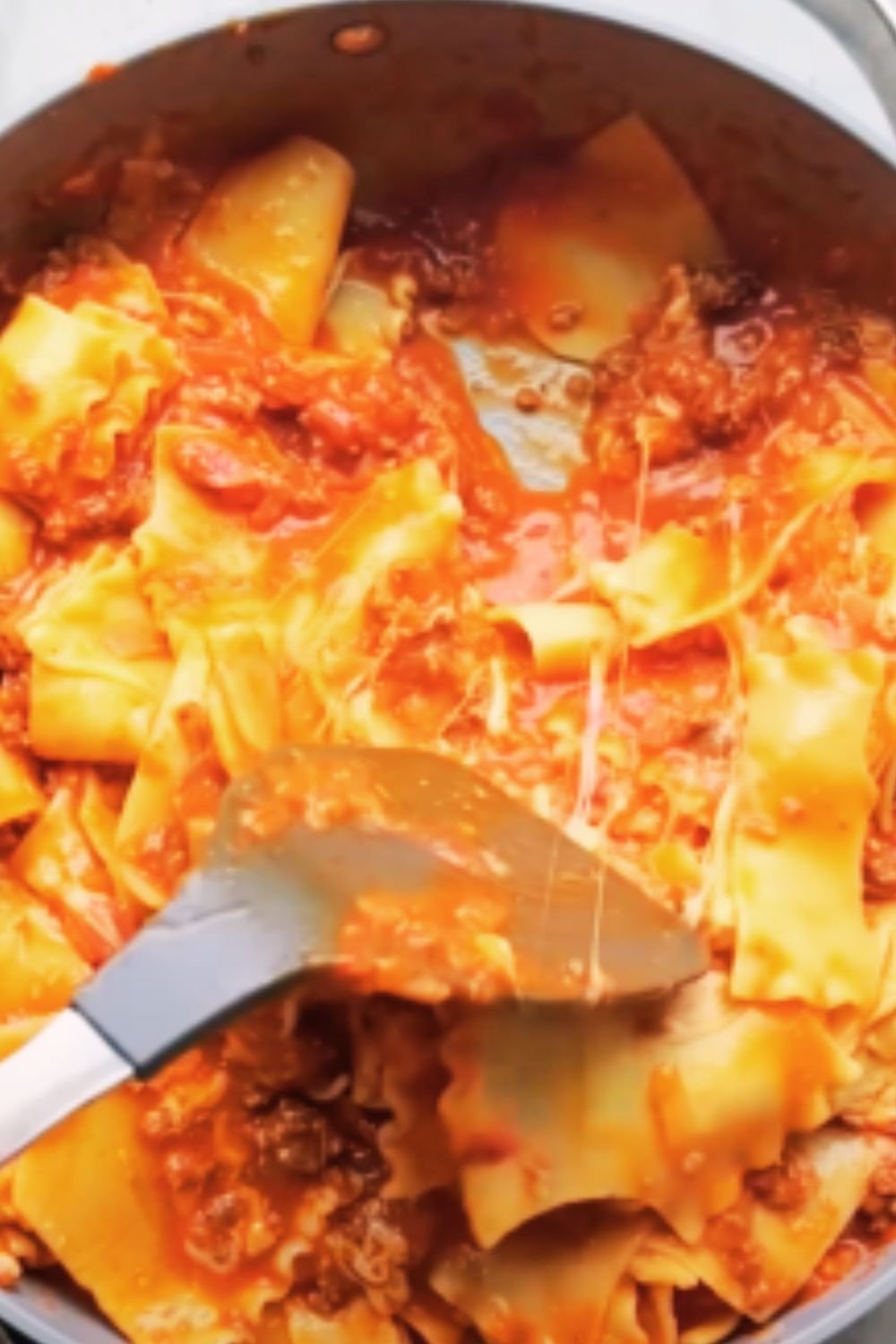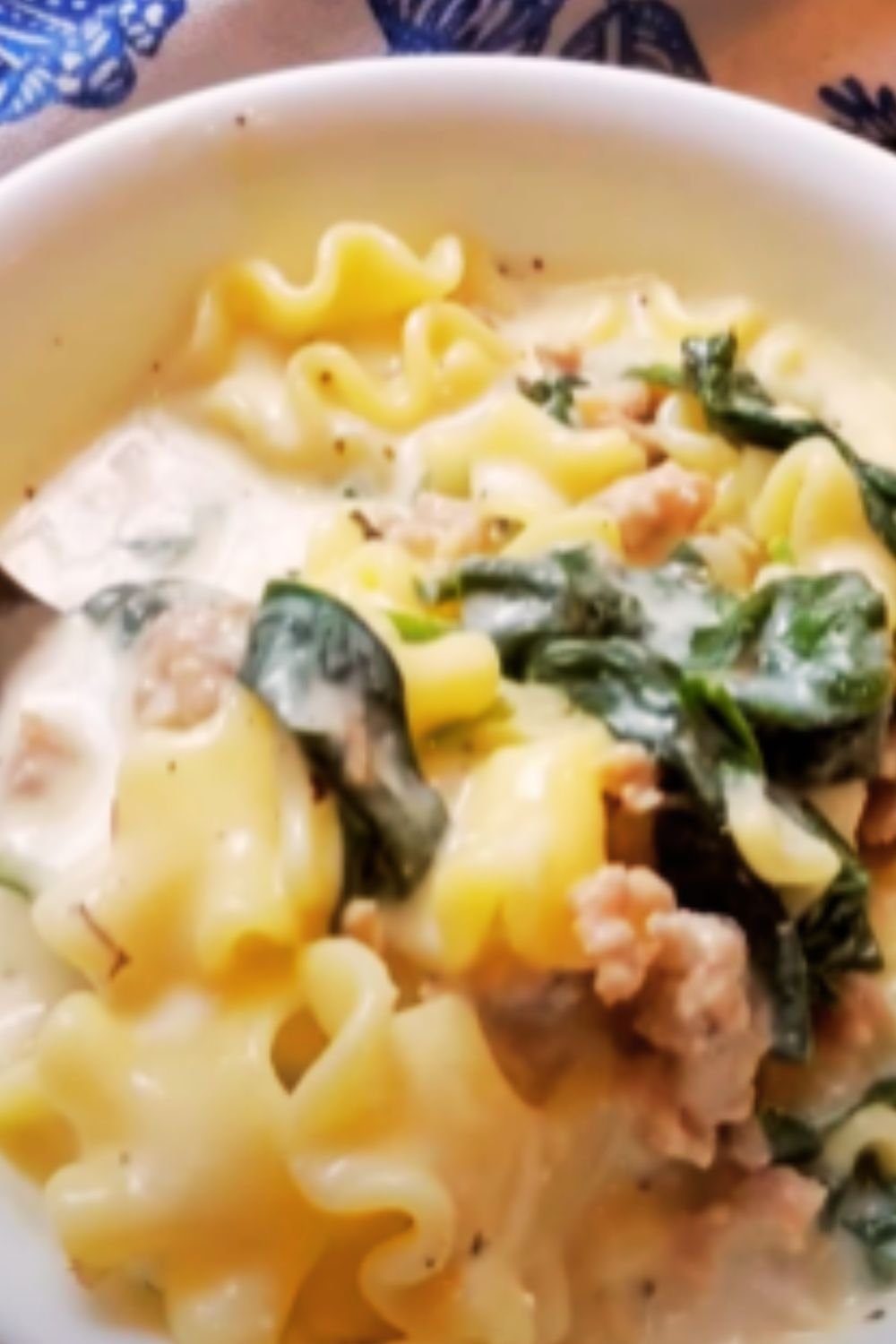There’s something magical about pulling a bubbling, golden-brown cheese lasagna from the oven. The aroma fills your kitchen with promises of comfort and satisfaction, while the layers of pasta, sauce, and cheese create a symphony of flavors that has made this dish a timeless classic.
I’ve spent years perfecting my cheese lasagna recipe, experimenting with different cheeses, sauces, and techniques. Today, I’m sharing my ultimate version – a recipe that strikes the perfect balance between traditional methods and modern tweaks for maximum flavor.
What Makes a Great Cheese Lasagna?
Before we dive into the recipe, let’s talk about what elevates a cheese lasagna from good to unforgettable. The secret lies in three critical components:
- Quality ingredients: Using freshly grated cheese instead of pre-packaged varieties makes a world of difference.
- Balanced flavors: The sauce should complement the cheese, not overpower it.
- Proper technique: Taking the time to properly layer and bake your lasagna ensures perfect texture.
I’ve discovered that many home cooks rush the process or cut corners with ingredients, resulting in a mediocre dish. But trust me – with a little patience and attention to detail, you’ll create a cheese lasagna that rivals any Italian restaurant’s version.
Essential Ingredients
Let’s break down what you’ll need for this incredible cheese lasagna:
Cheese Selection
Traditional lasagna typically includes ricotta, mozzarella, and Parmesan. I’ve experimented with countless variations and found that this combination offers the ideal balance:
- Whole milk ricotta: 16 ounces, provides creaminess and body
- Fresh mozzarella: 12 ounces, creates those irresistible cheese pulls
- Aged Parmesan: 8 ounces freshly grated, adds depth and umami
- Fontina: 8 ounces, melts beautifully and adds richness (my secret ingredient!)
The quality of your cheese directly impacts the final dish. I recommend visiting a local cheese shop if possible, or at minimum, grating your own cheese rather than using pre-shredded options, which contain anti-caking agents that affect melting.
The Perfect Sauce
While some recipes call for meat sauce, this cheese lasagna shines with a robust marinara that complements rather than competes with the cheese flavors:
- San Marzano tomatoes: 2 28-ounce cans, crushed by hand
- Yellow onion: 1 large, finely diced
- Garlic: 6 cloves, minced
- Extra-virgin olive oil: 3 tablespoons
- Fresh basil: 1 bunch, torn or roughly chopped
- Dried oregano: 2 teaspoons
- Crushed red pepper flakes: ½ teaspoon (optional)
- Sugar: 1 teaspoon, balances acidity
- Salt and freshly ground black pepper: To taste
Additional Components
- Lasagna noodles: 1 pound (about 16 noodles)
- Fresh Italian parsley: ¼ cup chopped
- Large eggs: 2, to bind the ricotta mixture
- Nutmeg: ¼ teaspoon freshly grated
Equipment You’ll Need
Before starting, gather these essential tools:
- 9×13-inch baking dish (preferably ceramic or glass)
- Large pot for boiling pasta
- Heavy-bottomed saucepan for the marinara
- Mixing bowls
- Box grater or food processor for cheese
- Colander
- Aluminum foil
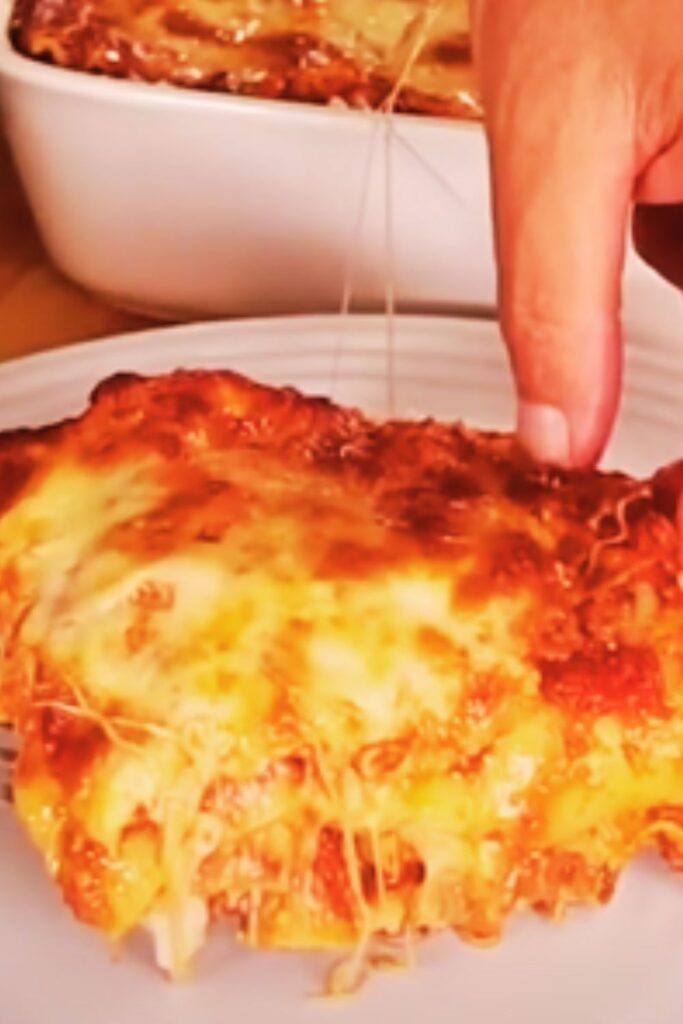
Step-by-Step Preparation
The Sauce
I begin with the sauce, as it needs time to develop its flavors:
- Heat olive oil in a large, heavy-bottomed pot over medium heat.
- Add diced onion and cook until translucent, about 5-7 minutes.
- Add minced garlic and cook until fragrant, about 30 seconds (be careful not to brown it).
- Pour in crushed tomatoes, oregano, sugar, salt, pepper, and red pepper flakes.
- Bring to a gentle simmer, then reduce heat to low.
- Cook uncovered for 45-60 minutes, stirring occasionally.
- During the last 5 minutes, stir in fresh basil.
- Taste and adjust seasonings as needed.
Pro tip: I’ve found that allowing the sauce to cool completely before assembling the lasagna intensifies the flavors. If time permits, make your sauce a day ahead.
The Cheese Mixture
While the sauce simmers:
- In a large bowl, combine ricotta cheese, parsley, eggs, nutmeg, 1 teaspoon salt, and ½ teaspoon black pepper.
- Mix thoroughly until smooth and well incorporated.
- Fold in ¼ cup grated Parmesan.
- Refrigerate until ready to use.
Preparing the Pasta
Properly cooked pasta is crucial for perfect lasagna texture:
- Bring a large pot of water to a rolling boil.
- Add 2 tablespoons salt.
- Add lasagna noodles and cook until very al dente (about 2 minutes less than package directions).
- Drain carefully and rinse with cold water to stop cooking.
- Lay noodles flat on clean kitchen towels to prevent sticking.
Pro tip: I slightly undercook the pasta since it will continue cooking in the oven. This prevents mushy lasagna layers.
Assembly: The Art of Layering
Creating the perfect lasagna is all about thoughtful layering:
- Preheat oven to 375°F (190°C).
- Spread 1 cup of sauce evenly across the bottom of your baking dish.
- Arrange 4 slightly overlapping noodles on top of the sauce.
- Spread ⅓ of the ricotta mixture over the noodles.
- Sprinkle with ¼ of the mozzarella and fontina cheeses.
- Pour 1½ cups of sauce, spreading evenly.
- Repeat layers twice more.
- Top with final layer of noodles, remaining sauce, and reserved mozzarella, fontina, and Parmesan.
Layering order visualization:
| Layer | Components (Bottom to Top) |
|---|---|
| Base | 1 cup sauce |
| Layer 1 | 4 noodles → ⅓ ricotta mixture → ¼ mozzarella & fontina → 1½ cups sauce |
| Layer 2 | 4 noodles → ⅓ ricotta mixture → ¼ mozzarella & fontina → 1½ cups sauce |
| Layer 3 | 4 noodles → ⅓ ricotta mixture → ¼ mozzarella & fontina → 1½ cups sauce |
| Top | 4 noodles → remaining sauce → remaining mozzarella, fontina & Parmesan |
Baking to Perfection
The baking method is what transforms your assembled ingredients into a cohesive masterpiece:
- Cover the baking dish tightly with aluminum foil, making sure it doesn’t touch the cheese.
- Place on a rimmed baking sheet to catch any potential overflow.
- Bake covered for 40 minutes.
- Remove foil and continue baking for 15-20 minutes until the top is golden brown and edges are bubbling.
- Turn on the broiler for the final 2-3 minutes to achieve that picture-perfect caramelized cheese top (watch carefully to prevent burning).
- Remove from oven and let rest for at least 15 minutes before serving.

Pro tip: The resting period is non-negotiable! It allows the lasagna to set properly, making it easier to slice and serve without falling apart.
Make-Ahead and Storage Options
One of the beautiful aspects of lasagna is its flexibility for preparation:
Make Ahead Options
- Sauce: Can be made up to 3 days ahead and refrigerated in an airtight container.
- Assembled unbaked lasagna: Cover tightly and refrigerate for up to 24 hours. Allow to sit at room temperature for 30 minutes before baking.
- Fully baked lasagna: Refrigerate for up to 5 days. Reheat covered at 350°F until heated through (about 30 minutes).
Freezing Instructions
For maximum convenience, lasagna freezes beautifully:
- Unbaked: Assemble completely, cover tightly with plastic wrap, then aluminum foil. Freeze for up to 3 months. Thaw overnight in refrigerator before baking.
- Baked: Cool completely, portion if desired, wrap tightly and freeze for up to 2 months. Thaw overnight in refrigerator and reheat covered at 350°F.
Storage comparison table:
| Storage Method | Maximum Time | Preparation Notes |
|---|---|---|
| Refrigerated (unbaked) | 24 hours | Let sit 30 min before baking |
| Refrigerated (baked) | 5 days | Reheat covered at 350°F |
| Frozen (unbaked) | 3 months | Thaw overnight before baking |
| Frozen (baked) | 2 months | Thaw overnight before reheating |
Serving Suggestions
A perfect cheese lasagna deserves complementary accompaniments:
- Garlic bread: Homemade with quality butter and fresh garlic
- Simple green salad: Arugula with lemon vinaigrette balances the richness
- Roasted vegetables: Zucchini, bell peppers, and eggplant make excellent sides
- Sparkling water with lemon: The acidity cuts through the richness
For special occasions, I recommend serving individual portions on warmed plates with a fresh basil garnish and an extra sprinkle of grated Parmesan.
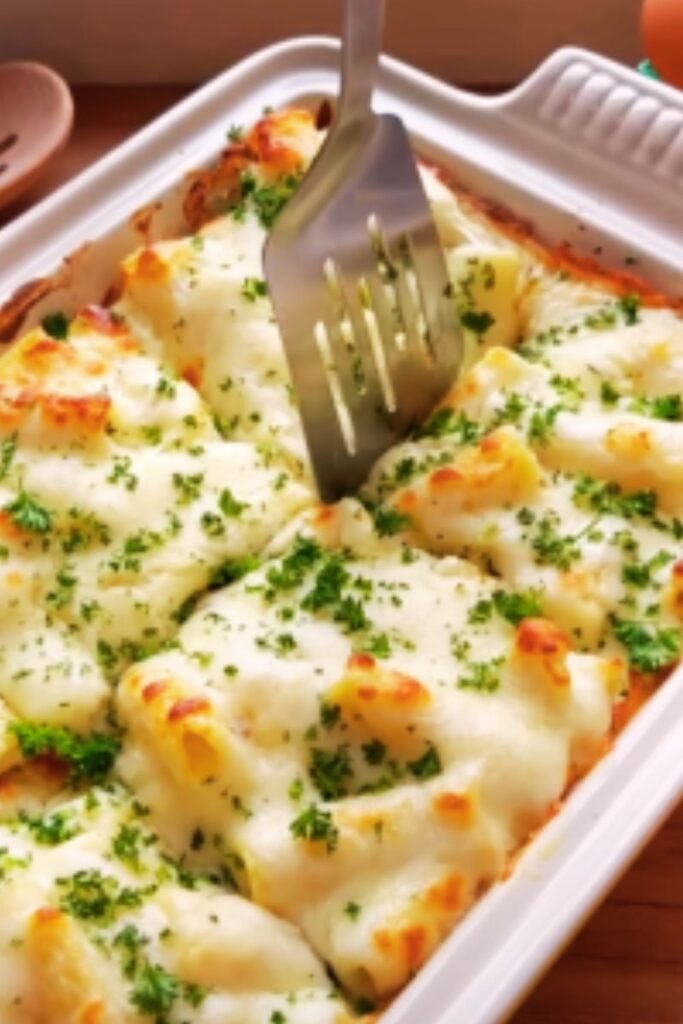
Troubleshooting Common Issues
Even experienced cooks encounter challenges with lasagna. Here are solutions to common problems:
Watery Lasagna
- Cause: Excess moisture in ricotta or sauce
- Solution: Strain ricotta in cheesecloth for 30 minutes before using; simmer sauce longer to reduce liquid
Tough Noodles
- Cause: Insufficient sauce or overbaking
- Solution: Ensure noodles are completely covered with sauce; check doneness earlier
Burnt Cheese Top
- Cause: Oven too hot or positioned too close to heating element
- Solution: Lower temperature by 25°F; position rack in middle of oven; watch carefully during broiling
Difficult to Serve Portions
- Cause: Insufficient resting time
- Solution: Allow to rest 20-30 minutes before cutting
Variations to Try
While this classic cheese lasagna is perfect on its own, here are some delicious variations:
Seasonal Adaptations
- Summer: Add thinly sliced zucchini and yellow squash between layers
- Fall: Incorporate roasted butternut squash and sage into the ricotta mixture
- Winter: Add sautéed spinach and nutmeg to the cheese mixture
Regional Italian Variations
- Northern Italy: Use béchamel sauce instead of ricotta
- Sicily: Add capers and olives to the tomato sauce
- Tuscany: Incorporate pecorino cheese alongside the Parmesan
Cheese alternatives table:
| Standard Cheese | Delicious Alternative | Flavor Profile |
|---|---|---|
| Ricotta | Cottage cheese (drained) | Lighter, more protein |
| Mozzarella | Provolone | Sharper, more character |
| Parmesan | Pecorino Romano | Sharper, saltier |
| Fontina | Gruyère | Nuttier, more complex |
Nutrition Information
For those watching their nutritional intake, here’s the approximate breakdown per serving (based on 12 servings):
| Nutrient | Amount |
|---|---|
| Calories | 420 |
| Protein | 24g |
| Carbohydrates | 38g |
| Fat | 21g |
| Saturated Fat | 12g |
| Cholesterol | 85mg |
| Sodium | 950mg |
| Fiber | 3g |
| Sugar | 6g |
| Calcium | 35% DV |
| Iron | 15% DV |
Questions & Answers
How do I know when my lasagna is done baking? The lasagna should be bubbling around the edges, and the cheese on top should be melted and golden brown. If you have an instant-read thermometer, the internal temperature should reach 165°F in the center.
Can I make this lasagna without boiling the noodles first? Yes, you can use no-boil noodles, but you’ll need to add about ½ cup more liquid to your sauce as these noodles absorb more moisture during baking. Alternatively, you can soak regular lasagna noodles in hot water for 15 minutes instead of boiling them.
Is there a good vegetable addition for picky eaters? Finely chopped spinach mixed into the ricotta is nearly undetectable but adds nutrition. You can also puree carrots or zucchini and add to the tomato sauce.
How can I reduce the calories in this recipe? Use part-skim ricotta and mozzarella, reduce the overall cheese by about 25%, and add sautéed vegetables between layers to maintain volume while reducing calories.
Can I make individual lasagnas instead of one large pan? Absolutely! Assemble in oven-safe ramekins using the same layering technique. Reduce baking time to about 30 minutes covered and 10 minutes uncovered.
Why do my lasagna noodles tear when I’m assembling the dish? Handle the cooked noodles gently and make sure they’re not overcooked. If they’re sticking together, a light drizzle of olive oil after draining can help separate them.
Is there a dairy-free version of this recipe? While it won’t be the same classic cheese lasagna, you can substitute with dairy-free ricotta alternatives (available commercially or homemade from tofu), dairy-free mozzarella, and nutritional yeast in place of Parmesan.
How far in advance can I make the sauce? The sauce actually improves with time and can be made up to 5 days ahead. Store in the refrigerator in an airtight container, or freeze for up to 3 months.
Final Thoughts
Creating the perfect cheese lasagna is both an art and a science. The key is patience – with the sauce, the assembly, and especially the resting period before serving. Don’t rush any step of the process, and you’ll be rewarded with a dish that brings people together and creates lasting memories.
I hope this recipe becomes a cherished addition to your cooking repertoire. Each time I make it, I’m reminded of why classic dishes endure through generations – they combine simplicity with depth of flavor in a way that continues to satisfy and delight.
Remember that cooking is about making the recipe your own. As you become comfortable with this version, feel free to incorporate your personal touches. That’s how great recipes evolve and how family traditions are born.
Happy cooking and even happier eating!
